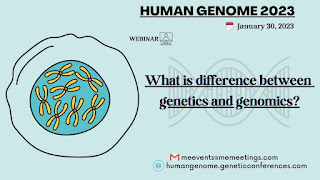What is human gene therapy?
Human gene therapy aims
to change a gene's expression or the biological characteristics of living cells
for therapeutic purposes. Gene therapy is a method for treating or curing
disease by changing a person's DNA. Gene treatments can function in a variety
of ways:
- Swapping out a disease-causing gene for a healthy copy
- Inactivating a disease-causing gene that is not functioning properly
- The process of adding a new or altered gene to the organism in order to treat a condition
Products utilizing gene therapy are being
investigated for the treatment of diseases like cancer, genetic disorders, and
infectious diseases. There are a variety of types of gene therapy
products, including:
- Plasmid DNA: The genetic engineering of circular DNA molecules can deliver therapeutic genes to human cells.
- Viral vectors: Some gene therapy products are generated from viruses because they naturally possess the capacity to introduce genetic material into cells. Viruses that have been altered to make them incapable of spreading infectious disease can then be utilized as vehicles to deliver therapeutic genes into human cells.
- Bacterial vectors: In order to deliver therapeutic genes into human cells, bacteria can be altered so that they no longer spread infectious diseases.
- Human gene editing technology: Gene editing aims to remove undesirable genes or fix mutated genes.
- Patient-derived cellular gene therapy products: The patient's cells are taken out, genetically altered (typically via a viral vector), and then put back in.
The Center for Biologics Evaluation and Research of the FDA is in charge of regulating biological products, including items used in gene therapy (CBER). An investigational new drug application (IND) must be submitted before conducting human clinical research in the US. The submission and approval of a biologics licence application is necessary for the marketing of a gene therapy product (BLA).




Comments
Post a Comment